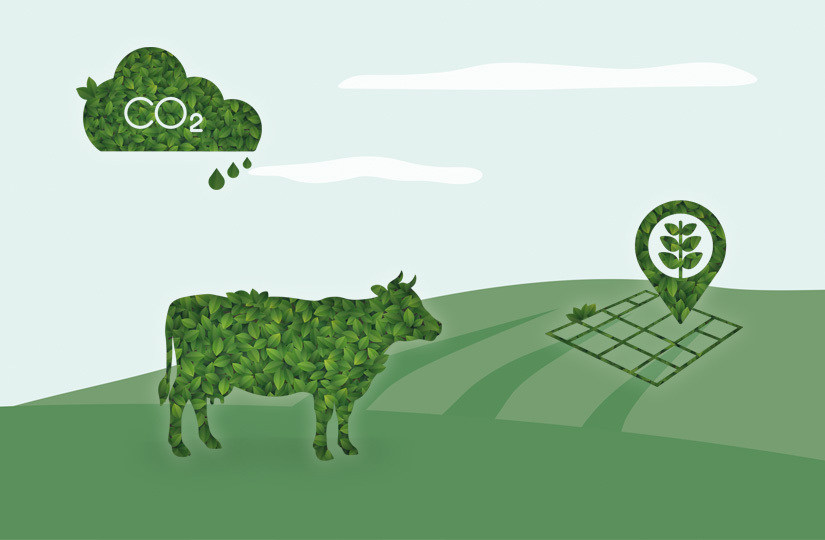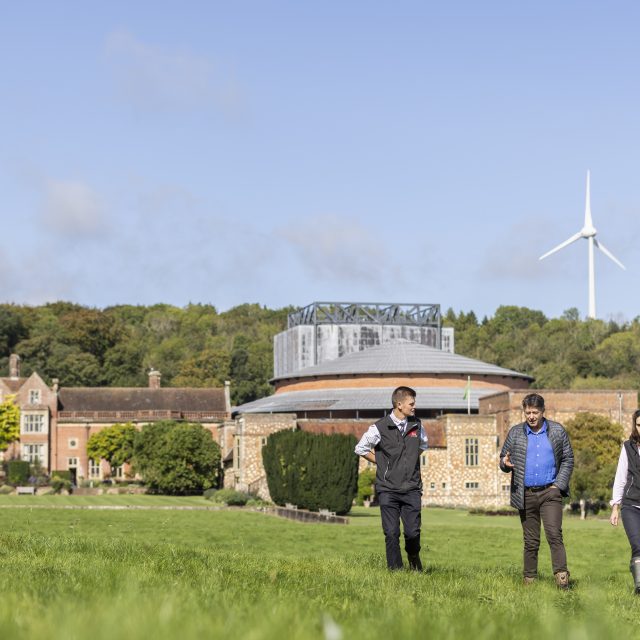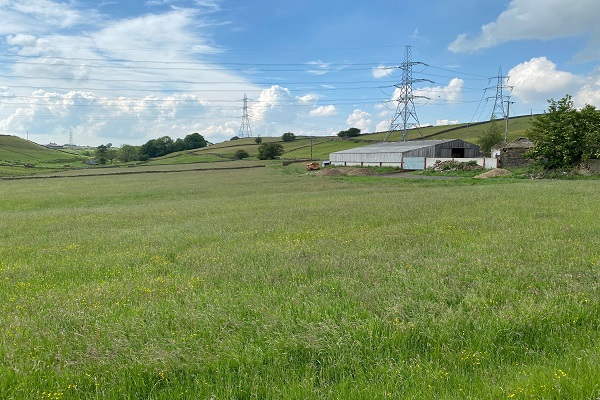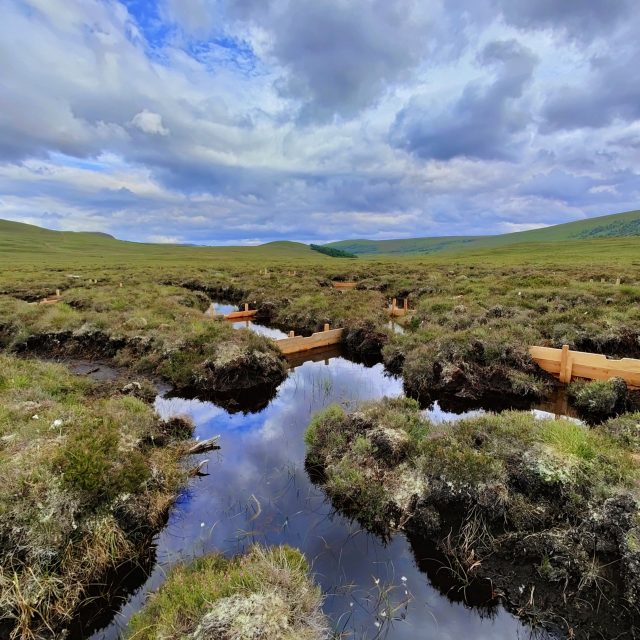Farm carbon audits: Why, what and how?
Legislative changes and the weight of public expectation are putting growing pressure on the farming sector to address its carbon footprint.
Summer 2019 marked a milestone in global efforts to address the issue of climate change, when the UK government became the first major economy in the world to pass laws to end its contribution to global warming by 2050.
It updated the Climate Change Act 2008 to commit the UK to bringing all GHG emissions to net zero by 2050, compared with a previous target of making an 80% reduction from 1990 levels.
This followed a recommendation by the Committee on Climate Change (CCC) that a net-zero GHG target for 2050 would be required to deliver on the terms of the 2016 Paris Agreement. This commits the UK, along with nearly 200 other countries, to holding the increase in global average temperature to well below 2C, if not 1.5C.
Net zero means that the UK’s total GHG emissions – including emissions of carbon dioxide, methane and nitrous oxide – must be equal to or less than the emissions the UK removes from the environment.
This can be achieved by a combination of emission reductions and by balancing any remaining emissions by removing them from the atmosphere. It is accepted that not every farm will be able to become net-zero, but the sector is expected to make significant progress in reducing emissions, with some estates, in particular, likely to play a big part in this process through carbon sequestration.
Why focus on farm carbon?
The agricultural sector finds itself cast as both saint and sinner when it comes to climate change.
The industry is unique in that while it is a significant source of greenhouse gas (GHG) emissions – about 10% of all UK emissions – it also has the potential to help to mitigate climate change by acting as a carbon sink, drawing down carbon dioxide from the atmosphere and locking it up into soil and vegetation.
This means when it comes to carbon accounting, farmers and landowners are being asked to take a twin-track approach:
1) To reduce levels of GHG emissions by improving productivity with the aim of producing the same amount of food, or more, using fewer inputs or low-carbon strategies.
2) To increase the amount of carbon being sequestered in soils and plants – sometimes referred to as carbon farming – by making land use changes, such as tree and hedgerow planting and peatland restoration.
With climate change rising rapidly up the government’s agenda, it will become increasingly important for landowners to show how they are taking action to reduce emissions and increase carbon sequestration.
Carbon audits and agricultural policy
Carbon accounting is the principal way to do this and it is expected to form a major part of future agriculture policy, possibly becoming mandatory for farm businesses, either through regulation or as part of meeting farm assurance obligations.
In Scotland, it is starting to form an increasingly important part of the agricultural policy framework. Grants of £500 per farm are already available from the Farm Advisory Service to pay for an accredited adviser to carry out a carbon audit and having such an audit is a requirement of the Beef Efficiency Scheme (BES).
Meanwhile, the pilot Sustainable Agriculture Capital Grant Scheme, which provides grants for Scottish farmers to buy capital equipment that will reduce emissions, offers bonus ‘green points’ to applicants who have previously carried out a carbon audit. However, carbon audits are about more than being seen to be saving the planet.
Evidence shows that taking steps to reduce emissions is also a good a way of improving technical performance and increasing business efficiency. In our experience, farms with a low carbon footprint are generally the most efficient because they are getting more from the inputs they are using. Many of the steps which can be taken to reduce emissions will result in lower costs and improved farm profitability, which will become ever more important as direct payments are phased out.
Becoming more efficient increases the sustainability of the business and will make it more resilient to change. It can be helpful to think of a carbon audit as a ‘resource use efficiency audit’, rather than simply a tool to assess a farm’s environmental performance.
Being ahead of the game in terms of carbon accounting could also prove to be a valuable marketing tool, offering consumers reassurance that the products they are consuming are climate-friendly. One of the leading UK producers of cold-pressed rapeseed oil has recently become the first food product to have been certified as both carbon neutral and plastic neutral, appealing to buyers who are increasingly concerned about climate change.

What is involved in a farm carbon audit?
The mantra “if you can’t measure it, you can’t manage it” will be familiar to anyone running a business.
Carbon accounting is a process which aims to quantify the GHG emissions associated with an individual farm, estate or enterprise, alongside the carbon that is being locked up through sequestration.
The carbon account can be used to help decision-making around three key areas:
• where emissions can be avoided;
• where emissions can be reduced;
• where unavoidable emissions can be recovered through sequestration.
There are a range of free carbon accounting tools or calculators available in the farming sector. The results are typically expressed as tonnes of carbon dioxide equivalent (CO2e) for the whole farm, or for an enterprise in kg of CO2e per kg of output.
The main carbon calculator tools are not new – some have been around for a decade or more, although are continually being updated – and they all differ slightly in terms of what they measure. The decision about which tool to use will depend on what the farmer wants to achieve from a carbon audit.
Picking a farm carbon audit tool
Three of the most popular are:
Agrecalc (Agricultural Resource Efficiency Calculator): This is most familiar in Scotland where it is used to carry out the carbon audits eligible for funding through the Farm Advisory Service, but is also suitable for use in the rest of the UK. It has an easy-to-use inputting process and takes into account technical issues around livestock productivity. A recent update has improved the recording of soil sequestration, looking at the impact of different tillage crops and cover crops used.
Cool Farm Tool: This calculator is used by lots of supply chain organisations as it is quick and easy to use, with results clearly displayed in graphs. It shows the carbon footprint of each enterprise, rather than the whole farm.
Farm Carbon Calculator: This is slightly less technically-focused than Agrecalc, in that there are no questions around livestock mortality and fertility. However, it does take an in-depth approach to carbon sequestration and provides a live pie chart of emissions as you input data, which helps to highlight what impact making changes could have on a farm’s carbon footprint.

How are farm carbon emissions calculated?
The tools are designed to factor in emissions across the whole range of activities on a farm. They may ask for information on:
- Use of fuels, electricity and contractors
- Use of aggregates, metals, wood and plastics
- Cropping types, yields, fertiliser and sprays and manure applications
- Livestock numbers, purchased feed, growth rates and mortality
- Buildings and machinery
- Water and waste
- Distribution and processing
Gathering the data can be the most challenging stage of producing an audit, so working with an advisor who has experience of the process will be helpful when it comes to finding the right data and sense-checking it.
The more accurate the information entered, the more meaningful the results will be.
Some of the figures needed are straightforward and will be easily found in farm records. Others require answers – for example, an estimate of annual tyre wear – that can be trickier, which is where working with someone with experience can help.
Technical advice is also helpful in terms of working out what actions to take once you have the results. Some land managers may find value in carrying out a carbon audit annually to help monitor performance and demonstrate progress.
A carbon audit is an important first step in assessing a baseline which helps with informed decision-making on long-term land use and environmental strategy.
Cutting carbon from the food supply chain
Many of the farming sector’s biggest customers are seeking to reduce their carbon footprint, as they react to public and legislative pressure, signing up to a range of environmental commitments.
Almost every major retailer already demands some form of carbon auditing from their direct farmer-suppliers and there is an expectation that this trend will continue to grow.
For example, Tesco has an overall net zero target by 2050, but is looking to reduce GHG emissions from agricultural activities associated with its business by 15% by 2030.
It has been working with its liquid milk suppliers in Tesco’s Sustainable Dairy Group (TSDG) for some time to reduce farm emissions. Strategies include optimising the application of nitrogen fertiliser, focusing on animal health, improving energy efficiency and building soil organic matter.
Morrisons has an overall goal of zero emissions by 2040, but has set itself a more ambitious net zero carbon target by 2030 for its agricultural supply chains producing own brand products.
It is currently working to help support its beef and dairy suppliers to increase on-farm productivity, farmland carbon storage and renewable energy utilisation.
Meanwhile, dairy co-operative Arla Foods has committed to working with its 10,300 farmer owners across Europe to reduce carbon emissions.
All Arla suppliers are required to take part in its Climate Check programme, which calculates emissions per litre of milk produced and identifies where there is room for improvement.
It hopes to deliver on-farm reductions of 3% per year on average, with a target of cutting emissions by 30% per kg of milk across the whole supply chain over the next decade, working towards carbon net zero by 2050.
Responding to pressure from both the supply chain and government, the National Farmers’ Union (NFU) has set a target for the farming sector to be net zero across England and Wales by 2040 and is now translating this target into an action plan.
This article is part of our Land Business Insights “Piecing together the rural carbon jigsaw” publication.






